This page is dedicated to the "The Early Career of Robert De Niro" exhbit at the Harry Ransom Center at the University of Texas at Austin. The exhibit was live from September 2022 through January 2023 and features a variety of physical artifacts presented by De Niro.
Don't wanna be here? Send us removal request.
Text
Thank you from deniroarchives!
Hello everyone,
I just wanted to let you know that all of the artifacts on display from the De Niro archives collection have been successfully posted! I wanted to thank you for coming on this journey with me through De Niro's amazing career and I hope you enjoyed viewing his artifacts and stories just as much as I did. I cannot describe the awe that I felt visiting the exhibit for the first time and being less than a foot away from clothes he actually wore, props he used in his films, and being able to see and observe his Oscar Statuettes. In true Academy Award fashion, I want to thank the Harry Ransom Center for displaying this collection (for free to the public!), The University of Texas for supporting the Ransom Center, and of course, Robert De Niro, for the entertainment that his films have brought to so many and for his contributions to the art world. And thank you again for interacting with this content, as it means more than you'll ever know.
Video Here.
#robert de niro#robert de niro hrc#robert de niro archives#hrc archives#harry ransom center#ut austin#films#film history
3 notes
·
View notes
Photo


“Raging Bull, draft script by Paul Schrader, ca. 1978 Robert De Niro Papers 125.3”
#robert de niro#robert de niro archives#robert de niro hrc#hrc archives#harry ransom center#ut austin#films#film history#scripts/notes
2 notes
·
View notes
Photo

“Outline for Raging Bull by Paul Schrader, ca. 1979 Paul Schrader Papers 76.5”
#robert de niro#robert de niro archives#robert de niro hrc#hrc archives#harry ransom center#ut austin#films#film history#scripts/notes
7 notes
·
View notes
Photo



“Raging Bull, final script by Martin Scorsese and Robert De Niro, February 1, 1979 Robert De Niro Papers 229”
#robert de niro#robert de niro archives#robert de niro hrc#hrc archives#harry ransom center#ut austin#films#film history#scripts/notes
5 notes
·
View notes
Photo



“The Raging Bull, screenplay by Emmett Clary, ca. 1973 Robert De Niro Papers 124.2”
#robert de niro#robert de niro archives#robert de niro hrc#hrc archives#harry ransom center#ut austin#films#film history#scripts/notes
1 note
·
View note
Photo

“Robert De Niro's copy of Raging Bull, My Story by Jake La Motta with Joseph Carter and Peter Savage (Englewood Cliffs, New Jersey: Prentice-Hall, Inc., 1970) Robert De Niro Papers BV235”
#robert de niro#robert de niro archives#robert de niro hrc#hrc archives#harry ransom center#ut austin#films#film history#books
9 notes
·
View notes
Photo

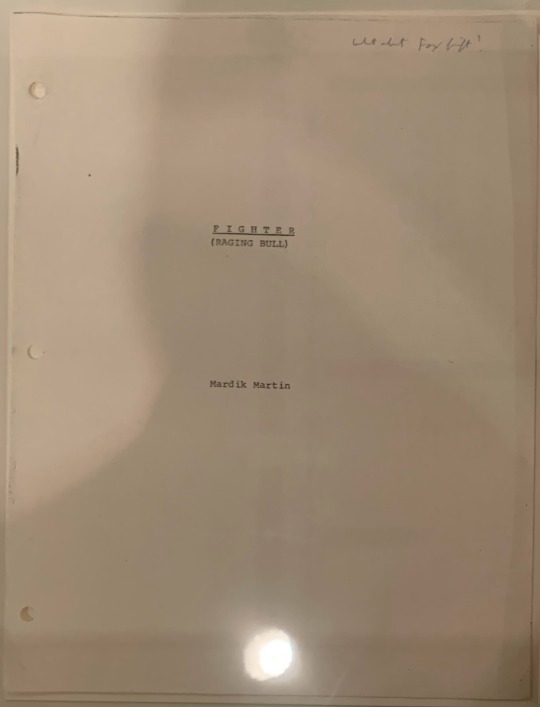
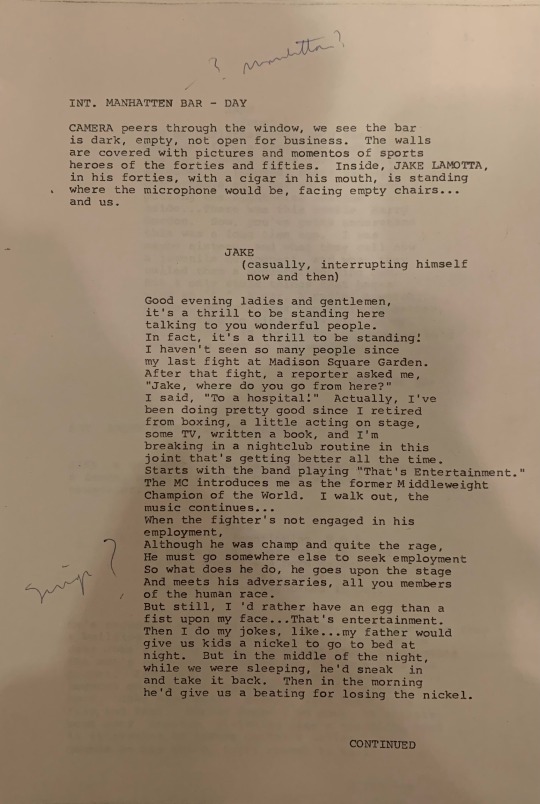
“Fighter (Raging Bull) script by Mardik Martin, ca. 1976 Robert De Niro Papers 125.1”
#robert de niro#robert de niro archives#robert de niro hrc#hrc archives#harry ransom center#ut austin#films#film history#scripts/notes
2 notes
·
View notes
Photo




“Brian Hamill (American, active mid-1960s to present) [Publicity stills] • Robert De Niro and Jake LaMotta on the set of Raging Bull • Robert De Niro and Joe Pesci in Raging Bull • Robert De Niro and Cathy Moriarty in Raging Bull • Robert De Niro in Raging Bull 1980 Gelatin silver prints Robert De Niro Papers 480.15”
#robert de niro#robert de niro archives#robert de niro hrc#hrc archives#harry ransom center#ut austin#films#film history#photographs
2 notes
·
View notes
Photo


“John Bryson (American, 1923-2005) [Behind-the-scenes photograph of Martin Scorsese and Robert De Niro in Raging Bull] 1980 Chromogenic color print John Bryson (American, 1923-2005) [Behind-the-scenes photograph of Johnny Barnes, Robert De Niro, and Martin Scorsese in Raging Bull] 1980 Chromogenic color print Robert De Niro Papers 195”
#robert de niro#robert de niro archives#robert de niro hrc#hrc archives#harry ransom center#ut austin#films#film history#photographs
6 notes
·
View notes
Photo

“Martin Scorsese Storyboards for Sugar Ray fight #1, 1979 Robert De Niro Papers 127.6”
#robert de niro#robert de niro archives#robert de niro hrc#hrc archives#harry ransom center#ut austin#films#film history#storyboards
3 notes
·
View notes
Photo

“Unidentified photographers [Two pages from Robert De Niro's copy of LaMotta family photo album] Ca. 1950 Ink jet reproduction Robert De Niro Papers 205”
#robert de niro#robert de niro archives#robert de niro hrc#hrc archives#harry ransom center#ut austin#films#film history#photographs
1 note
·
View note
Photo

“Unidentified photographer [Make-up session stills] Ca. 1979 Gelatin silver print Robert De Niro Papers 229”
#robert de niro#robert de niro archives#robert de niro hrc#hrc archives#harry ransom center#ut austin#films#film history#photographs
2 notes
·
View notes
Photo

“Unidentified photographer [Makeup photographs for Raging Bull] 1979 Ink jet reproduction Robert De Niro Papers 127.1”
#robert de niro#robert de niro archives#robert de niro hrc#hrc archives#harry ransom center#ut austin#films#film history#photographs
4 notes
·
View notes
Photo

“Leopard-print robe, boxing trunks, and boxing gloves worn by Robert De Niro in Raging Bull, 1980 Robert De Niro Papers 505”
#robert de niro#robert de niro archives#robert de niro hrc#hrc archives#harry ransom center#ut austin#films#film history#props
4 notes
·
View notes
Photo

“One-sheet poster for Raging Bull, 1980 Robert De Niro Papers osf 58 De Niro was given a copy of the book Raging Bull, My Story by Jake La Motta (with Joseph Carter and Peter Savage) while he was in Italy working on The Godfather, Part II. De Niro found the story full of cinematic possibilities but could not persuade Scorsese to direct. De Niro began to develop the project himself. In 1976 De Niro asked producers Robert Chartoff and Irwin Winkler - who had recently finished production on Rocky - to consider working with him on the project. Intrigued by the story and wanting to continue their creative collaboration with De Niro and Scorsese, the two agreed to produce. Scorsese, however, was focused on developing The Last Temptation of Christ, which Chartoff and Winkler had also agreed to produce, and again declined to direct. In 1978, Scorsese collapsed from exhaustion during the Telluride Film Festival. De Niro's conversations with Scorsese during his recovery resulted in Scorsese's growing enthusiasm for Raging Bull. Winkler and Chartoff had been disappointed with previous versions of the screenplay but were encouraged by Paul Schrader's draft, which they felt was vastly improved but "cold." Winkler encouraged Scorsese and De Niro to write one themselves based on Schrader's work and LaMotta's book. After four weeks of intense work the two produced a draft that impressed everyone. De Niro studied every detail about the character; did background research on boxing, watching countless bouts on videotape; and trained for months with Jake LaMotta himself. Scorsese cast Joe Pesci as Joey after seeing him in an independent film The Death Collector (1976), and Pesci in turn recommended Cathy Moriarty for the part of Jake's wife, Vicky. Initial reviews of Raging Bull were mixed due to the brutality both in and outside the ring, but the film ultimately received eight Academy Award nominations. Thelma Schoonmaker won for editing and Robert De Niro for Best Actor. In 1990, the Library of Congress added Raging Bull to the National Film Registry for being "culturally, historically, and aesthetically significant.”
#robert de niro#robert de niro archives#robert de niro hrc#hrc archives#harry ransom center#ut austin#films#film history#posters
3 notes
·
View notes
Photo





“Greer Cavagnaro (American, 1951-2012?) [Publicity still of Meryl Streep and Robert De Niro on the set of The Deer Hunter] 1977 Gelatin silver print Greer Cavagnaro (American, 1951-2012?) [Publicity still of the wedding scene from The Deer Hunter] 1977 Gelatin silver print Katrina Franken (d. 1977) [Publicity still of Robert De Niro in The Deer Hunter] 1977 Gelatin silver print Katrina Franken (d. 1977) [Publicity still of Robert De Niro and John Savage in The Deer Hunter] 1977 Gelatin silver print Greer Cavagnaro (American, 1951-2012?) [Publicity still of Christopher Walken and Robert De Niro in The Deer Hunter] 1977 Gelatin silver print Robert De Niro Papers 396.3, 396.2, 44.5 --- The Deer Hunter After the successes of The Godfather, Part II (1974) and Taxi Driver (1976), the grueling production of New York, New York (1977) caused De Niro to be selective about his next role. He was still keen to make a film based on the boxing memoir by Jake La Motta, but Scorsese, who was De Niro's sole choice for director, was not yet on board. De Niro instead chose The Deer Hunter (1978), based on the strength of the screenplay by Derek Washburn and the film's director Michael Cimino. Cimino was a veteran screenwriter whose first feature as director, Thunderbolt and Lightfoot (1974), was a critical and box office success. De Niro's involvement helped secure a deal with EMI, a record company that had recently entered the film business. The story of three friends from western Pennsylvania and the brutal effects of war on them and their community was unusual at the time. Films critical of the U.S. involvement in Vietnam had been uncommon, but 1978 saw several such films released including Coming Home (1978) and The Boys in Company C (1978.) Francis Ford Coppola's Apocalypse Now (1979) would come out the following year. A pivotal scene in The Deer Hunter involving the three friends as prisoners of war being forced by their captors to play Russian Roulette attracted harsh criticism. Nevertheless, the film was praised by many critics and was a tremendous box office success, ultimately winning five Academy Awards, including Best Picture, Best Director for Cimino, and Best Supporting Actor for Christopher Walken.”
#robert de niro#robert de niro archives#robert de niro hrc#hrc archives#harry ransom center#ut austin#films#film history#photographs
5 notes
·
View notes
Photo
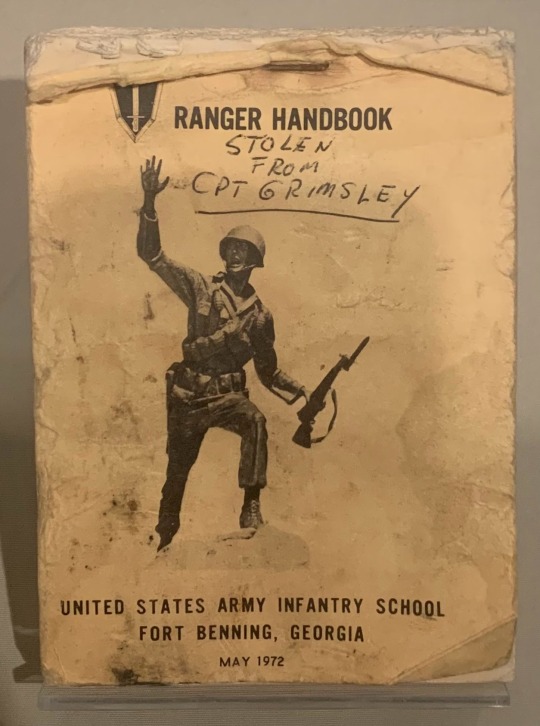
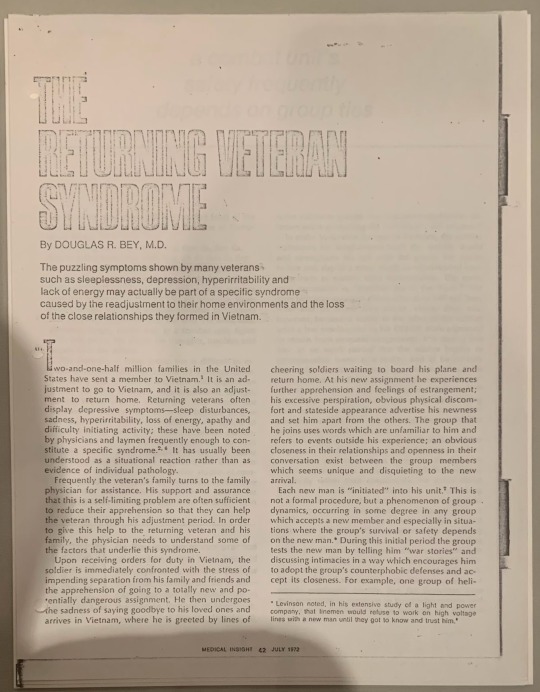
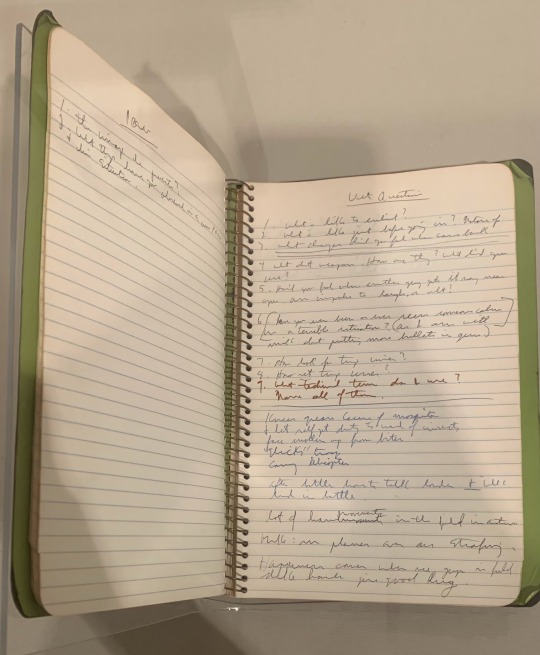


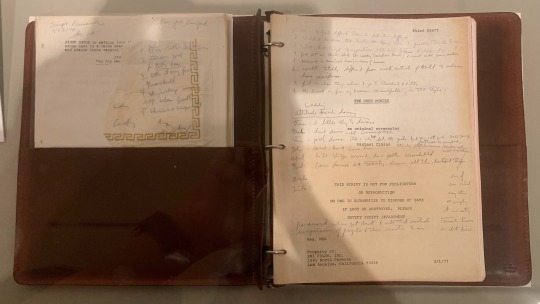
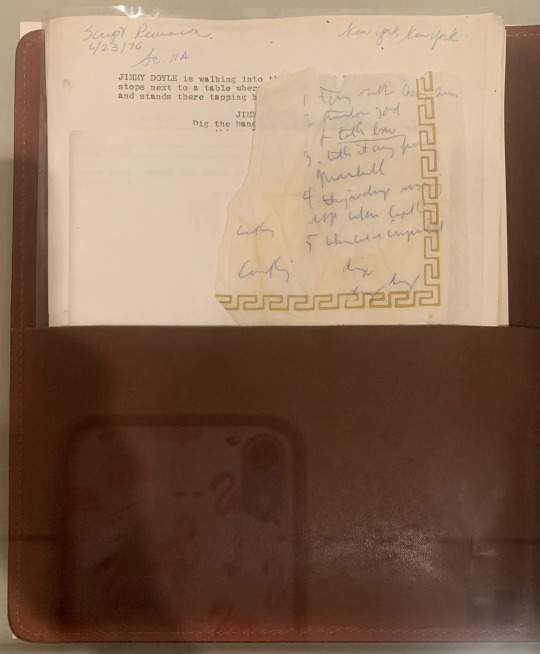

“Robert De Niro's copy of the United States Army Infantry School Ranger Handbook (Fort Benning, Georgia, 1972) Original photocopy of Douglas R. Bey, M.D., "The Returning Veteran Syndrome," in Medical Insight, July 1972 Robert De Niro notes for The Deer Hunter in a spiral notebook, ca. 1977 Dog tags for the character Michael Vronsky, worn by Robert De Niro in The Deer Hunter, ca. 1977 1977 Robert De Niro Costumes and Personal Effects Robert De Niro's annotated copy of the third draft of Michael Cimino's The Deer Hunter script, 1977 Robert De Niro Papers 45.6, 44.6, 183, 44.4, CP1031 De Niro's proclivity for background research and advance preparation are evident in his portrayal as Michael Vronsky in Michael Cimino's The Deer Hunter (1978). He traveled to Ohio to talk with mill workers in Steubenville and Mingo Junction and to study the idiosyncrasies of their speech. He read about hunting techniques and regulations and met with Vietnam veterans, particularly former prisoners of war. Some of these veterans provided memoirs, medical and psychiatric records, and other information. The production crew watched hours of news footage of the war. De Niro also continued his practice of analyzing the screenplay and making copious notes. The spiral- bound notebook here includes not only notes made during preparations for The Deer Hunter but also notes on Raging Bull (1980), which De Niro hoped would be his next project.”
#robert de niro#robert de niro archives#robert de niro hrc#hrc archives#harry ransom center#ut austin#films#film history#books#misc papers#props
3 notes
·
View notes